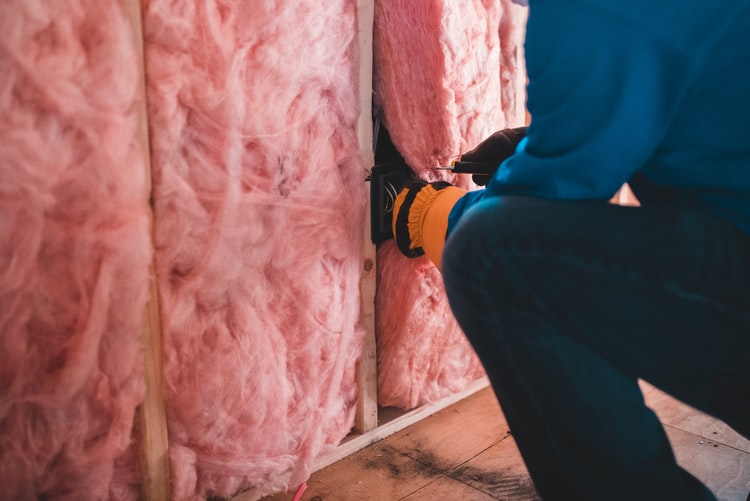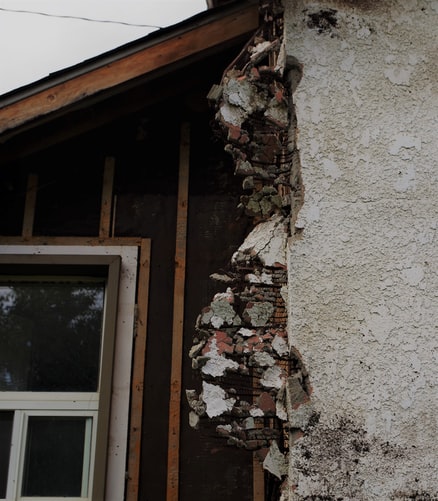The number one cause of mesothelioma cancer is from being exposed to occupational asbestos.
Many industries and occupations put thousands of people at risk every day for being exposed to asbestos. In fact, workers are even at the risk of getting various other cancers and even pulmonary diseases when repeated exposure happens when working with asbestos.
Being Exposed to Asbestos in the Workplace
Asbestos is resistant to many forms, including electricity, chemicals, heat, and even water. This is mainly due to the fact that asbestos is a natural mineral in a fibrous form. In America, asbestos was found to be just about anywhere and was used to produce household products regularly.
Asbestos could be found throughout construction, materials, and commercial sites.
Many of these products included:
- Sealants, Joint Compound, and paints
- Drywall, flooring, and insulation
- Cement and concrete
- Bricks, pipes, and gaskets
- Roofing
- Plastic and rubber
- Lawn furniture and garden pots
- Mattresses
- Electrical appliances
Asbestos was literally everywhere in the 20th century, and many people’s health was at risk when they were or still are exposed to asbestos through their occupation. Exposure to asbestos has been proven to cause cancer and a multitude of other types of diseases.

An estimated 27 million workers have been exposed to asbestos through the early 1940s into the late 1970s.
The Agency for Toxic Substances & Disease Registry has been keeping track of occupational exposure to asbestos and makes all their findings public record.

Even though new regulations have reduced the risk of being exposed to asbestos at your workplace, it remains present in many occupations and puts those workers at some degree of risk. There has been a decline in the workers exposed to asbestos above the recommended limit; however, from 2000 to 2003, it has been recorded that 4.3% of workers are still at some type of risk from asbestos exposure.
Regulations for Asbestos
Once OSHA (Occupational Safety and Health Administration) started regulating asbestos exposure in the early 1970s, they worked diligently to reduce permissible asbestos concentrations throughout workplaces in America. Their efforts helped reduce the number of risks workers were at for developing some of the related diseases.
However, since asbestos-related illnesses and diseases can take decades to develop, many people suffer from the inadequate regulations that were barely present prior to the 1970s. This is known as the latency period.
In early 2020, OSHA decided to determine what measures are now being taken in the workplaces to protect workers from asbestos exposure.
Present Day Asbestos Exposure
Asbestos is now regulated in the United States; however, it has not been banned from being used. Currently, you can still find asbestos in many schools, homes, buildings, factories, roads, cars, trains, and ships across the entire country. Many things that people have contact daily with are still made using asbestos.

This includes many different construction products used to build homes and skyscrapers. In fact, anything from roofing materials to the manufacturing process of making the clutches and brakes for many different car manufacturers still runs the risk of occupational asbestos exposure.

Most Common Occupations with Higher Risks for Occupational Asbestos Exposure
When you think about all the present occupations when building a school, home, or any other building type, you will find that occupational exposure to asbestos is a real risk that millions of people take every day.
When you look at the most common places of employment for these types of risks, you’ll find:
Construction Workers
Most flooring and roof materials still contain asbestos and are used daily. Individuals who work on home renovations or the demolition crews have the highest risk of being exposed to asbestos. Keep in mind that prior to the ‘80s, many different construction products were made using asbestos as one of the ingredients.
Industry Workers
Handling industrial insulation, chemicals, and textiles are just a few examples of how some of the trade laborers, machinists, mechanics, and many different types of a foreman are at the risk of being exposed to asbestos on the job. Many workers were even exposed to asbestos through the handling of paper, and the industrial insulators are at the highest risk.
Fireman and First Responders
From the protective clothing they wear, including boots and helmets, many firefighters are exposed to asbestos from the time they start working. During the attacks of 9/11, firefighters and first responders who were present at the World Trade Center were exposed to the toxic mineral. When the fires damaged much of the construction containing asbestos, this forced the fibers to become airborne.
Workers at Power Plants
Since fireproofing sprays and insulation for pipes are used as heat resistant products at power plants, these workers are exposed to asbestos’ risks. Cutting any of the old pipes that were made with asbestos puts these workers at a greater risk for asbestos exposure. There have been studies done that show how some power plant workers giving mucus samples had asbestos.
Workers at Shipyards
Over the years, juries have awarded millions of dollars to shipyard workers exposed to asbestos through different products. Workers who perform their duties in the boiler room have a high-risk exposure to asbestos, along with the people working on repairing any of the ships. Almost a third of all the mesothelioma lawsuits are filed by government shipyard workers and veterans.
High-Risk Occupations for Exposure to Asbestos that No Longer Exist
Some occupations are at a higher risk for asbestos exposure than others.
For example, miners had the highest risk of being exposed to asbestos. In 2002, mining for asbestos ended; however, many miners today are dealing with the consequences of being exposed to vermiculite and even talc, which were contaminated with asbestos.
Most factory jobs, construction sites, and workers who work with any types of chemicals could be at risk of asbestos exposure. This also includes industries like railroads, hospitals, and schools.

Workers who have developed an asbestos-related disease, including mesothelioma, may be eligible for compensation and should consult with an attorney that specializes in asbestos cases.

